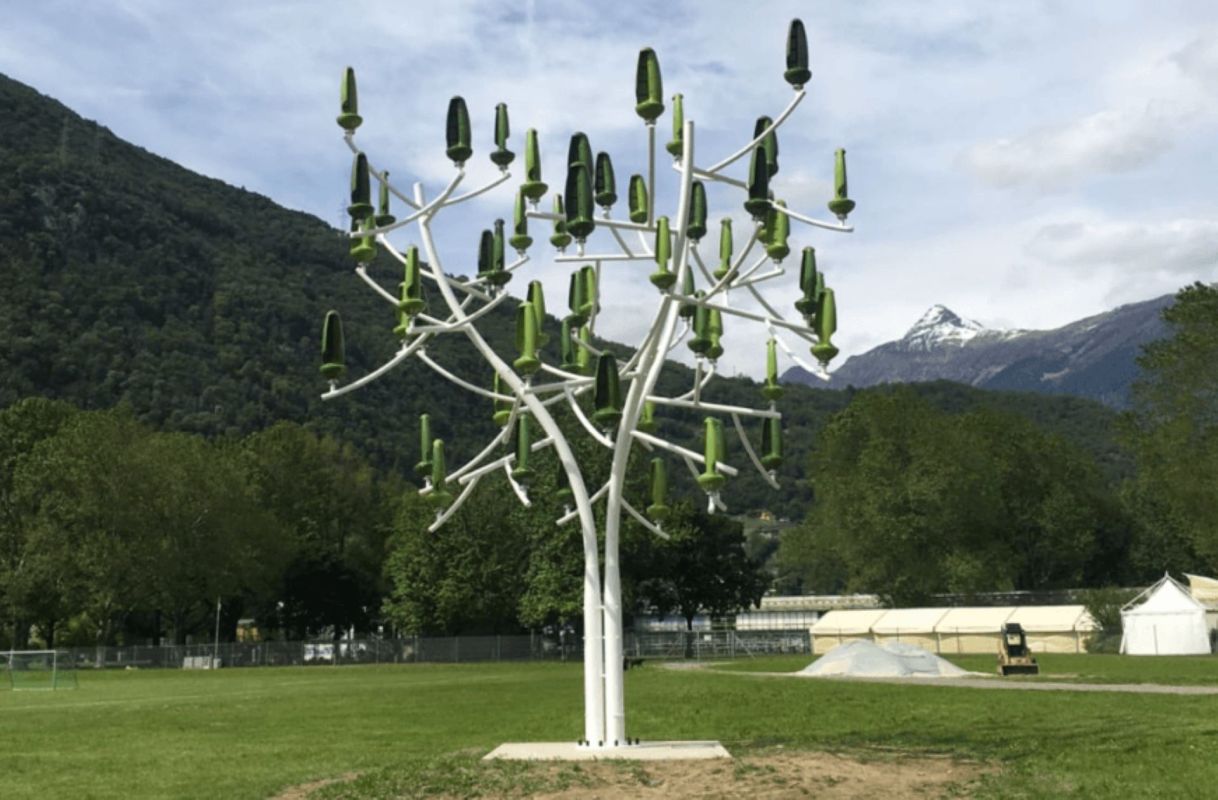French company New World Wind is putting a new spin on wind energy in urban environments with small-scale turbines designed to look like trees.
The company's "Aeroleaf" technology features metal trees tipped with microturbines that resemble leaves. Though the creations don't look exactly like real trees, their nature-inspired design helps reduce visual pollution in the city, according to the company's owner, Luc Eric Krief.
Each "tree" stands between about 16 and 33 feet tall and is easy to "plant." Once the turbine is in place, a bracket and three bolts complete its construction.
The structure's small size helps avoid bird collisions, and it operates in silence. Plus, each tree functions like public art, with leaves coming in orange, blue, or green, and trunks in brown, gray, or white.
These turbines remain separate from the power grid and have the potential to deliver power directly to buildings, public furniture, car parks, offices, and electric vehicle charging stations, according to New World Wind's website.
Krief noted, "This is what we call self-consumption."
Each leaf is capable of producing up to 1,000 kilowatt hours (kWh) of energy annually. Euronews estimated that a 36-leaf tree could generate enough electricity to power a four-person household.
Plus, the design offers another unique advantage, Krief told the publication.
"Solar panels can work between 10 a.m. and 4 p.m. … with our technology, we can provide energy seven days a week, 24 hours a day," he said. "And if we create more energy than we can consume during the night or day, we can store it inside the battery."
Each tree has four batteries and can store power for up to an hour in normal conditions. A hybrid version of the tree, which features solar "petals," uses solar and wind together.
So far, the company has installed 130 of these trees worldwide, including in the U.S., South Korea, and the UK. While its clients are mostly commercial, a handful of residential trees have been "planted" in the U.S. and UK.
Unfortunately, the technology may be a bit out of reach for many consumers, as a 36-leaf tree costs €51,990 (about $56,326). However, programs like the Inflation Reduction Act, which gives Americans tax incentives to invest in clean energy, could help ease up-front costs for interested consumers in the U.S.
The wind tree is just one of many new innovations in turbine technology across the globe.
For example, a Spanish startup called Vortex Bladeless came up with an invention nicknamed the "skybrator," a cylindrical wind energy harvester that works by oscillating rather than using a rotating blade. Among its advantages are that it's easier to manufacture and assemble than traditional turbines and is safer for wildlife, according to the company.
And a Scottish company has developed a compact honeycomb-shaped wind turbine. The invention is suited for urban environments because it can be placed on top of buildings and other structures.
Join our free newsletter for weekly updates on the coolest innovations improving our lives and saving our planet.









